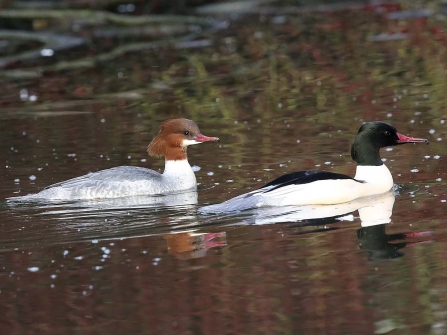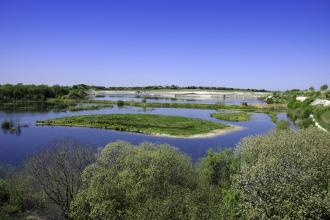The number of birds you see on rivers, lakes and reservoirs increases during the winter as many birds come to the UK to escape colder weather on the continent.
They are all able to live in the same area because they feed in different ways.
Males are often brightly coloured. Females can be harder to identify as they tend to be mostly brown but look for a male nearby to help with identification.
There are two main types of ducks, dabblers and divers.
What are dabblers?
Dabblers feed near the water's surface or tip up and stick their tails in the air to feed just under the surface. Their legs are in the middle of their body, which means they can easily walk around on land. Here are four of the most common dabblers that you'll see.















